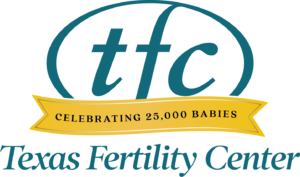
Learn more about fertility surgery options at TFC San Antonio
As part of your fertility evaluation, one of our San Antonio fertility surgeons will determine whether you need surgery to improve your chances of pregnancy.
A basic fertility evaluation will include a medical history, a physical examination, a transvaginal ultrasound, an HSG, a saline sonogram and bloodwork. The evaluation may reveal structural abnormalities, such as fibroids, polyps, Mullerian anomalies (developmental abnormalities of the uterus and/or fallopian tubes), endometriosis, pelvic adhesions, intrauterine adhesions or ovarian cysts. Your fertility specialist will be able to individualize the type of fertility surgery that is best for you depending on what is found during the evaluation.
Understanding the types of fertility surgery
Our San Antonio fertility specialists are highly trained and experienced in performing a variety of reproductive surgeries. Each type of surgery is tailored to treat specific types of fertility issues.
- Hysteroscopy is a surgery that involves placing a small camera called a hysteroscope into the uterine cavity through the vagina and cervix. This type of surgery is best used to address abnormalities within the uterine cavity, such as polyps, fibroids, uterine septum and intrauterine adhesions. Most women can resume normal activity the day after a hysteroscopy.
- Laparoscopy is a minimally invasive procedure that involves placing a small camera into the abdomen through very small incisions. If abnormalities are identified, such as endometriosis, ovarian cysts, uterine fibroids or pelvic adhesions, additional surgical instruments can be placed to treat the problem. Most patients can return to work within one to two weeks after a laparoscopy, although some are able to return in a few days.
- Laparotomy is a surgical approach that requires a larger (6 to 10 cm) incision across the lower abdomen. It is commonly performed to remove large uterine fibroids or to treat conditions that are not amenable to laparoscopic correction. Most patients stay in the surgery center or hospital overnight. Patients may be able to return to work two weeks after surgery, but complete recovery may take as long as four to six weeks.
Experience and compassion make all the difference
When you’re considering fertility surgery, you want to select a surgeon who has the knowledge and experience to treat your specific issues. Our San Antonio fertility surgeons have sub-specialty training in reproductive surgery techniques and have helped many patients achieve their goal of becoming parents.
Contact us to schedule an appointment and learn more about fertility surgery.



